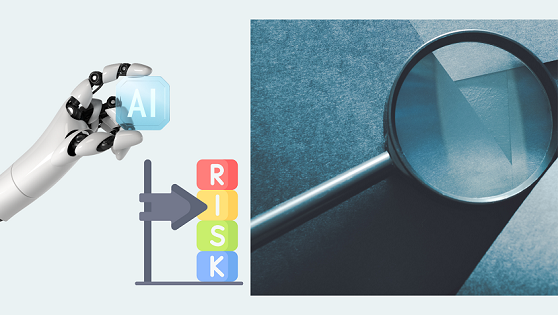In the current rapidly changing and ever more complicated environment, businesses face a myriad of threats that can affect their operations and financial performance. Traditional risk assessment approaches, while still beneficial, often fall short in their ability to quickly analyze large amounts of information and adjust to changing threats. This is the point at which an AI risk assessment generator comes into play, revolutionizing the way organizations identify, analyze, and reduce risks.
By leveraging advanced computational methods and ML techniques, AI risk assessment generators provide a powerful tool for executives. These platforms can sift through enormous datasets in real time, uncovering findings that human analysts may overlook. As a result, organizations can unlock new opportunities for growth and creativity while at the same time improving their resilience to potential threats. Embracing the advantages of AI in risk assessment is not just a trend; it is becoming a necessity for businesses aiming to succeed in the current competitive market.
Comprehending AI in Risk Assessment
In the modern fast-paced world, organizations confront a myriad of risks that can impact their operations and reputation. Traditional risk assessment methods often fall short due to their reliance on historical data and manual processes. The advent of AI technology has transformed this landscape, providing a robust solution to enhance risk evaluation. An AI risk assessment generator leverages vast amounts of data and sophisticated algorithms to identify potential risks more accurately and efficiently.
One of the key advantages of AI in risk assessment is its ability to analyze complex data sets quickly. By processing information from various sources, including historical incidents, market trends, and compliance regulations, AI systems can uncover patterns that may not be immediately obvious to human analysts. This capability not only speeds up the risk assessment process but also enhances the depth of insights, allowing organizations to make informed decisions based on real-time data rather than outdated or incomplete information.
Furthermore, AI risk assessment generators can constantly learn and adapt over time. As new data becomes available and the business environment evolves, these systems enhance their algorithms, improving their accuracy and relevance. This dynamic approach ensures that organizations remain proactive in identifying and mitigating risks, ultimately leading to better strategic planning and resource allocation. By incorporating AI into risk assessment, organizations can unlock new opportunities and build resilience in an unpredictable landscape.
Benefits of AI-Driven Risk Assessment
Artificial intelligence-powered risk assessment generators provide extraordinary velocity and efficiency in analyzing foreseeable risks. ai risk assessment generator involve extensive manual data collection and analysis, which can be time-consuming and susceptible to mistakes. In contrast, AI algorithms can quickly process massive amounts of data from various inputs, identifying patterns and insights that may go missed through conventional techniques. This allows organizations to make informed decisions swiftly, enhancing their ability to respond to emerging threats.
Another major advantage of using AI in risk assessment is its ability to constantly learn and adapt. As organizations gather more data, AI systems can improve their models to boost accuracy over time. This trait ensures that the risk assessments stay relevant, providing interested parties with current insights into their risk landscape. By integrating ML capabilities, businesses can predict future risks and develop preventative strategies to mitigate them, ultimately creating a stronger operational framework.
Furthermore, AI risk assessment generators enhance decision-making by providing data-driven suggestions customized to specific organizational contexts. With the ability to analyze both descriptive and numerical data, these tools deliver insights that are actionable and aligned with organization's aims. This targeted approach enables organizations to allocate resources efficiently and focus on risks, ensuring that critical vulnerabilities are addressed swiftly. In this way, AI not only improves risk management processes but also enhances overall business performance.
Utilizing AI Technologies for Optimal Risk Management
Embedding AI-driven risk assessment tools into current risk management frameworks can significantly enhance the process of making decisions. These tools leverage vast amounts of data and advanced algorithms to identify, evaluate, and classify risks with greater efficiency than traditional methods. Organizations can exploit AI's capability to scrutinize past data, indicators, and patterns, which provides a more comprehensive understanding of likely risks and their consequences. By thus, businesses can actively address vulnerabilities before they emerge into more significant issues.

Furthermore, AI risk assessment generators introduce a certain degree of automation to the process of risk analysis, cutting down on the time and resources required for traditional assessments. This streamlining not only simplifies workflows but also minimizes human error, which is often a key factor in inefficient risk management. With the ability to regularly adapt and adapt from fresh data, these AI tools ensure that the risk assessments are relevant, but also relevant to the constantly shifting landscape of risks and opportunities that organizations confront.
Additionally, the insights generated from AI risk assessment tools can foster improved communication and collaboration within teams. By providing a unified structure and distinct data illustrations, stakeholders can easily understand the risks present and make educated decisions together. This cooperative approach, augmented by AI-generated insights, leads to a practice of proactive risk management within the organization, thereby creating opportunities for growth and advancement while mitigating possible dangers.
